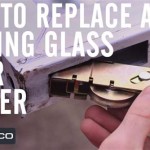Cost to Repair Sliding Patio Door: A Comprehensive Guide
Sliding patio doors provide convenient access to outdoor spaces and offer increased natural light within a home. However, like any frequently used component of a building, these doors are subject to wear and tear, leading to the need for repair. Understanding the various factors that contribute to the cost of repairing a sliding patio door is crucial for homeowners looking to budget effectively and make informed decisions about maintenance or replacement.
Several elements influence the overall cost, encompassing the type of damage, the necessary parts, labor expenses, and geographic location. This article will provide a detailed overview of these factors, enabling homeowners to better estimate the expense involved and plan accordingly.
The initial step in determining the cost is identifying the specific problem affecting the door's functionality. Common issues include problems with the rollers, track, locking mechanism, weather stripping, and the door's frame or glass. Each of these problems requires a different repair approach and subsequently varies in cost. A thorough assessment of the damage is essential before obtaining quotes from repair professionals.
Key Point 1: Factors Influencing Repair Costs
Several factors interweave to determine the final cost of repairing a sliding patio door. Understanding these elements is critical for both budgeting and selecting a qualified repair service.
Type of Damage: The nature of the problem directly impacts the cost. A minor issue, such as replacing worn rollers, will be significantly less expensive than addressing a warped frame or shattered glass. A broken locking mechanism might require only a new lock cylinder, while a damaged track could necessitate extensive track replacement and realignment. Accurately diagnosing the problem is the first step towards understanding the potential cost.
Parts Required: The cost of replacement parts contributes significantly to the overall expense. Rollers, handles, locks, weather stripping, and even sections of the track can vary widely in price depending on the quality and manufacturer. Specialized or custom parts for older or less common door models can be particularly expensive and may require longer lead times for procurement. High-quality parts, while more expensive initially, often offer greater durability and longevity, potentially reducing the need for future repairs.
Labor Costs: Professional labor is a substantial portion of the repair cost. Hourly rates for skilled technicians vary based on experience, location, and the complexity of the repair. Relatively straightforward repairs, such as roller replacement, will typically involve less labor time than more complex tasks like frame repair or glass replacement. Some companies may charge a flat fee for certain repairs, simplifying the cost estimation process. Obtaining multiple quotes from different contractors is essential to compare labor rates and ensure competitive pricing.
Geographic Location: Regional variations in labor rates and the cost of materials also play a role. Areas with a higher cost of living generally have higher labor rates. Similarly, the availability of specific parts can vary by region, potentially affecting their price. Remote locations may also incur additional travel costs for service technicians. Therefore, it's crucial to consider the prevailing market conditions in your local area when estimating repair costs.
Door Material: The material of the patio door frame – wood, vinyl, aluminum, or fiberglass – also influences the repair cost. Wood frames, while aesthetically pleasing, can be more susceptible to rot and insect damage, potentially leading to more extensive and costly repairs. Vinyl and aluminum frames are generally more durable and require less maintenance, but repairs to these materials may necessitate specialized tools and techniques, influencing labor costs.
Accessibility: The ease of access to the patio door can also impact labor costs. If the door is located in a hard-to-reach area or requires extensive maneuvering of equipment, the repair may take longer and therefore cost more. Obstacles obstructing access should be cleared before the technician arrives to potentially reduce the labor time.
Emergency Repairs: Emergency repairs, such as fixing a broken door that poses a security risk, typically incur higher costs than scheduled repairs. Businesses often charge a premium for after-hours or weekend service calls. Whenever possible, addressing minor issues promptly can prevent them from escalating into emergencies and incurring these additional costs.
Key Point 2: Common Sliding Patio Door Problems and Associated Costs
Understanding the types of issues that commonly affect sliding patio doors helps homeowners anticipate potential repair needs and associated costs. Each problem requires a specific solution, which directly affects the scope and price of the repair.
Roller Replacement: This is one of the most common repairs. Over time, the rollers that allow the door to slide smoothly along the track can wear down, become damaged, or accumulate debris. The cost to replace rollers typically ranges from $50 to $200, depending on the quality of the rollers and the complexity of the installation. Some doors require specialized rollers that are more expensive and difficult to find.
Track Repair or Replacement: Damaged or misaligned tracks can hinder smooth operation and put extra strain on the rollers. Minor track damage can sometimes be repaired by bending or straightening the track. However, severe damage may require track replacement. The cost for track repair or replacement can range from $100 to $500, depending on the extent of the damage and the type of track.
Locking Mechanism Repair or Replacement: A malfunctioning locking mechanism compromises security. Repairs can range from simple adjustments to complete lock replacement. The cost typically falls between $75 and $300, contingent on the type of lock and the complexity of the installation. High-security locks will naturally command a higher price.
Weather Stripping Replacement: Worn or damaged weather stripping allows drafts and moisture to enter, increasing energy costs and potentially leading to water damage. Replacing weather stripping is a relatively inexpensive repair, usually costing between $20 and $100. However, the cost can increase if specialized weather stripping is required or if the door frame is damaged and requires repair prior to installation.
Glass Replacement: Cracked or broken glass poses a safety hazard and compromises insulation. Single-pane glass replacement is generally less expensive than double-pane or insulated glass replacement. The cost can range from $200 to $800 or more, depending on the size of the glass, the type of glass (e.g., tempered, laminated, insulated), and the complexity of the installation. Custom-sized glass will also increase the price significantly.
Frame Repair: Damage to the door frame, such as rot in wood frames or dents in aluminum frames, can affect the door's structural integrity and sealing capabilities. Frame repair costs can vary significantly, ranging from $100 for minor repairs to $1000 or more for extensive repairs. The type of material and the extent of the damage will determine the final cost.
Handle Replacement: Broken or loose handles can make it difficult to operate the door. Replacing a handle is a relatively simple and inexpensive repair, usually costing between $30 and $150, depending on the style and quality of the handle.
Addressing Air Leaks: Unsealed gaps around the door frame can lead to drafts and increased energy costs. Caulking or applying weather stripping can effectively seal these gaps. The cost for this repair is generally low, ranging from $20 to $100, depending on the amount of sealant or weather stripping required.
Key Point 3: DIY vs. Professional Repair
Determining whether to attempt a do-it-yourself (DIY) repair or to hire a professional is a critical decision that can impact both the cost and the quality of the repair. Several factors should be considered before making this choice.
Skill Level and Experience: Assessing your own skill level and experience is paramount. Simple repairs, such as replacing rollers or weather stripping, may be within the capabilities of a moderately skilled homeowner. However, more complex repairs, such as track replacement, frame repair, or glass replacement, require specialized tools, knowledge, and experience. Attempting a repair beyond your skill level can lead to further damage and ultimately increase the overall cost of repair.
Availability of Tools and Equipment: Many repairs require specific tools and equipment. For example, glass replacement requires specialized tools for handling glass safely and securing it properly. Track replacement may require power tools for cutting and drilling. If you do not own these tools, you will need to purchase or rent them, which can add to the cost of the DIY repair. Improper use of tools can also result in injury or further damage to the door.
Time Commitment: DIY repairs require a significant time commitment. Even seemingly simple repairs can take longer than expected, especially if you encounter unforeseen challenges. Consider your available time and whether you are willing to dedicate the necessary hours to complete the repair properly. Hiring a professional can save you time and ensure the repair is completed efficiently.
Cost Comparison: Before deciding to DIY, compare the cost of materials for a DIY repair with the cost of hiring a professional. Factor in the cost of tools, materials, and your time. In some cases, the cost of hiring a professional may be comparable to the cost of a DIY repair, especially if specialized tools are required. Furthermore, a professional repair typically comes with a warranty, providing added peace of mind.
Warranty Considerations: Attempting a DIY repair may void the manufacturer's warranty on the door. Before undertaking any repairs, carefully review the warranty terms and conditions. Hiring a qualified professional can ensure that the repair is performed in accordance with warranty requirements, preserving your coverage.
Safety Concerns: Certain repairs, such as glass replacement, pose significant safety risks. Handling broken glass can result in cuts and injuries. Working at heights or with power tools can also be hazardous. If you are not comfortable with these risks, it is best to hire a professional. Professionals have the necessary training and equipment to perform repairs safely.
Potential Liability: If you perform a DIY repair improperly, you may be liable for any resulting damage or injuries. For example, if you replace the locking mechanism incorrectly, it could compromise the security of your home. Hiring a licensed and insured professional protects you from potential liability.
In conclusion, while DIY repairs can be a cost-effective option for simple issues, more complex repairs often warrant the expertise of a professional. Carefully considering your skill level, available tools, time commitment, cost comparison, warranty considerations, and safety concerns will help you make an informed decision that ensures a successful and safe repair.

Here S How Much It Ll Cost You To Repair Your Sliding Glass Door

Here S How Much It Really Costs To Repair Your Sliding Glass Doors

Here S How Much It Ll Cost You To Repair Your Sliding Glass Door

Cost Of Replacing Interior Exterior Doors Thompson Creek

What Is The Sliding Glass Door Roller Repair Cost

How Much Does It Cost To Replace A Sliding Glass Door Labor Included

Considerations Replacing Sliding Glass Doors Onedayglass

How Much Do Sliding Glass Patio Doors Cost 2024

2024 Patio Door Replacement Cost Angi

How Much Does Sliding Patio Door Installation Cost 2024 Today S Homeowner
Related Posts








